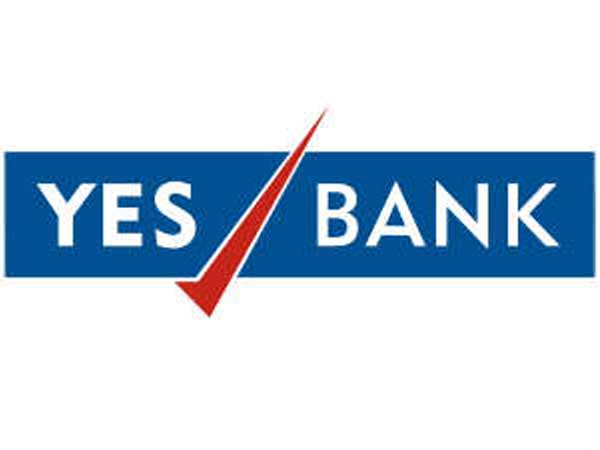| |
Auction Date |
Tenor (Days) |
Maturity Date |
Amount |
Current Rate /
Cut off Rate |
| C. Liquidity Adjustment Facility (LAF) & Marginal Standing Facility (MSF) |
| I. Today’s Operations |
| 1. Fixed Rate |
|
|
|
|
|
| (i) Repo |
|
|
|
|
|
| (ii) Reverse Repo |
Sun, 12/09/2021 |
1 |
Mon, 13/09/2021 |
2,513.00 |
3.35 |
| (iii) Special Reverse Repo~ |
|
|
|
|
|
| (iv) Special Reverse Repoψ |
|
|
|
|
|
| 2. Variable Rate& |
|
|
|
|
|
| (I) Main Operation |
|
|
|
|
|
| (a) Reverse Repo |
|
|
|
|
|
| (II) Fine Tuning Operations |
|
|
|
|
|
| (a) Repo |
|
|
|
|
|
| (b) Reverse Repo |
|
|
|
|
|
| 3. MSF |
Sun, 12/09/2021 |
1 |
Mon, 13/09/2021 |
3.00 |
4.25 |
| 4. Special Long-Term Repo Operations (SLTRO) for Small Finance Banks (SFBs)£ |
|
|
|
|
|
5. Net liquidity injected from today’s operations
[injection (+)/absorption (-)]* |
|
|
|
-2,510.00 |
|
| II. Outstanding Operations |
| 1. Fixed Rate |
|
|
|
|
|
| (i) Repo |
|
|
|
|
|
| (ii) Reverse Repo |
Sat, 11/09/2021 |
2 |
Mon, 13/09/2021 |
12,062.00 |
3.35 |
| |
Fri, 10/09/2021 |
3 |
Mon, 13/09/2021 |
67,472.00 |
3.35 |
| |
Thu, 09/09/2021 |
4 |
Mon, 13/09/2021 |
4,81,121.00 |
3.35 |
| (iii) Special Reverse Repo~ |
Thu, 09/09/2021 |
15 |
Fri, 24/09/2021 |
6,937.00 |
3.75 |
| (iv) Special Reverse Repoψ |
Thu, 09/09/2021 |
15 |
Fri, 24/09/2021 |
2,513.00 |
3.75 |
| 2. Variable Rate& |
|
|
|
|
|
| (I) Main Operation |
|
|
|
|
|
| (a) Reverse Repo |
Thu, 09/09/2021 |
15 |
Fri, 24/09/2021 |
3,50,015.00 |
3.41 |
| (II) Fine Tuning Operations |
|
|
|
|
|
| (a) Repo |
|
|
|
|
|
| (b) Reverse Repo |
Tue, 07/09/2021 |
7 |
Tue, 14/09/2021 |
50,008.00 |
3.38 |
| 3. MSF |
Sat, 11/09/2021 |
2 |
Mon, 13/09/2021 |
279.00 |
4.25 |
| |
Fri, 10/09/2021 |
3 |
Mon, 13/09/2021 |
527.00 |
4.25 |
| |
Thu, 09/09/2021 |
4 |
Mon, 13/09/2021 |
13.00 |
4.25 |
| 4. Long-Term Repo Operations# |
Mon, 17/02/2020 |
1095 |
Thu, 16/02/2023 |
499.00 |
5.15 |
| |
Mon, 02/03/2020 |
1094 |
Wed, 01/03/2023 |
253.00 |
5.15 |
| |
Mon, 09/03/2020 |
1093 |
Tue, 07/03/2023 |
484.00 |
5.15 |
| |
Wed, 18/03/2020 |
1094 |
Fri, 17/03/2023 |
294.00 |
5.15 |
| 5. Targeted Long Term Repo Operations^ |
Fri, 27/03/2020 |
1092 |
Fri, 24/03/2023 |
12,236.00 |
4.40 |
| |
Fri, 03/04/2020 |
1095 |
Mon, 03/04/2023 |
16,925.00 |
4.40 |
| |
Thu, 09/04/2020 |
1093 |
Fri, 07/04/2023 |
18,042.00 |
4.40 |
| |
Fri, 17/04/2020 |
1091 |
Thu, 13/04/2023 |
20,399.00 |
4.40 |
| 6. Targeted Long Term Repo Operations 2.0^ |
Thu, 23/04/2020 |
1093 |
Fri, 21/04/2023 |
7,950.00 |
4.40 |
| 7. On Tap Targeted Long Term Repo Operations€ |
Mon, 22/03/2021 |
1095 |
Thu, 21/03/2024 |
5,000.00 |
4.00 |
| |
Mon, 14/06/2021 |
1096 |
Fri, 14/06/2024 |
320.00 |
4.00 |
| |
Mon, 30/08/2021 |
1095 |
Thu, 29/08/2024 |
50.00 |
4.00 |
| 8. Special Long-Term Repo Operations (SLTRO) for Small Finance Banks (SFBs)£ |
Mon, 17/05/2021 |
1095 |
Thu, 16/05/2024 |
400.00 |
4.00 |
| |
Tue, 15/06/2021 |
1095 |
Fri, 14/06/2024 |
490.00 |
4.00 |
| |
Thu, 15/07/2021 |
1093 |
Fri, 12/07/2024 |
750.00 |
4.00 |
| |
Tue, 17/08/2021 |
1095 |
Fri, 16/08/2024 |
250.00 |
4.00 |
| D. Standing Liquidity Facility (SLF) Availed from RBI$ |
|
|
|
26,695.80 |
|
| E. Net liquidity injected from outstanding operations [injection (+)/absorption (-)]* |
|
|
-8,58,271.20 |
|
| F. Net liquidity injected (outstanding including today’s operations) [injection (+)/absorption (-)]* |
|
|
-8,60,781.20 |
|
| G. Cash Reserves Position of Scheduled Commercial Banks |
| (i) Cash balances with RBI as on |
12/09/2021 |
6,21,643.80 |
|
| |
11/09/2021 |
6,23,960.41 |
|
| |
10/09/2021 |
6,31,651.59 |
|
| (ii) Average daily cash reserve requirement for the fortnight ending |
24/09/2021 |
6,25,660.00 |
|
| H. Government of India Surplus Cash Balance Reckoned for Auction as on¥ |
09/09/2021 |
0.00 |
|
| I. Net durable liquidity [surplus (+)/deficit (-)] as on |
27/08/2021 |
11,40,445.00 |
|
| @ Based on Reserve Bank of India (RBI) / Clearing Corporation of India Limited (CCIL). |
| – Not Applicable / No Transaction. |
| ** Relates to uncollateralized transactions of 2 to 14 days tenor. |
| @@ Relates to uncollateralized transactions of 15 days to one year tenor. |
| $ Includes refinance facilities extended by RBI. |
| & As per the Press Release No. 2019-2020/1900 dated February 06, 2020. |
| * Net liquidity is calculated as Repo+MSF+SLF-Reverse Repo. |
| # As per the Press Release No. 2020-2021/287 dated September 04, 2020. |
| ^ As per the Press Release No. 2020-2021/605 dated November 06, 2020. |
| € As per the Press Release No. 2020-2021/520 dated October 21, 2020, Press Release No. 2020-2021/763 dated December 11, 2020, Press Release No. 2020-2021/1057 dated February 05, 2021 and Press Release No. 2021-2022/695 dated August 13, 2021. |
| ¥ As per the Press Release No. 2014-2015/1971 dated March 19, 2015. |
| £ As per the Press Release No. 2021-2022/181 dated May 07, 2021. |
| ~ As per the Press Release No. 2021-2022/177 dated May 07, 2021. |
| ψ As per the Press Release No. 2021-2022/323 dated June 04, 2021. |
Ajit Prasad
Director |
| Press Release: 2021-2022/849 |
|











